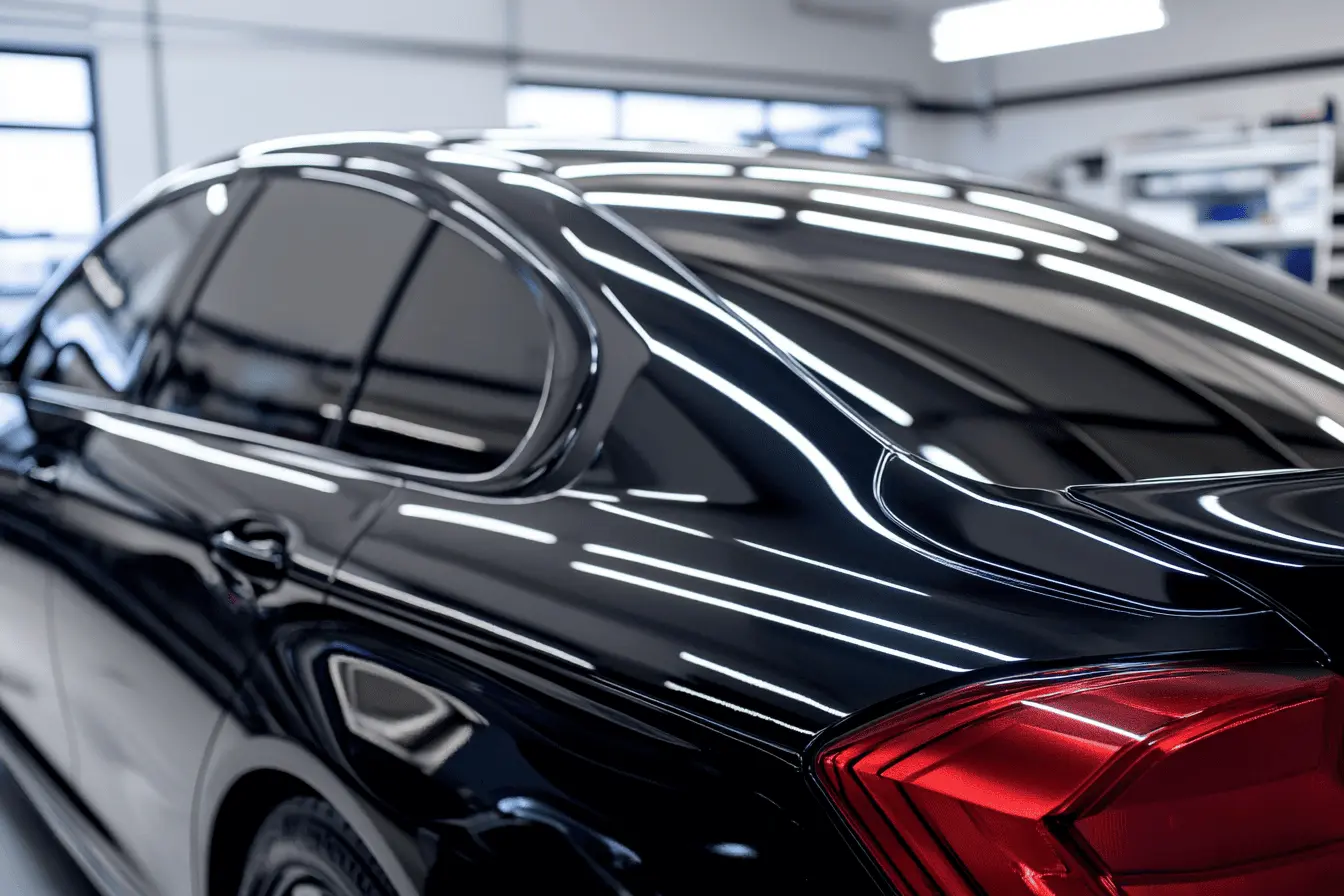
Replacing a timing belt is one of the most common car garage services. How much does a VW Golf timing belt replacement cost in the UK? How often does it need to be changed? Plus: How to save money and get free estimates!
How much does VW Golf timing belt replacement cost in the UK?
The average timing belt (also cambelt) replacement cost for a VW Golf is between £400 – £800 in the UK. The material costs for a new timing belt, tensioner and idler pulley will only be around £100 – £200. What makes the timing belt replacement so expensive is the labour cost, as it is a comparatively complex and time-consuming job. The average labour cost will range around £300 – £400.
AVERAGE: £400 – £600
The timing belt replacement costs for the VW Golf are moderate, as the timing belt replacement usually only takes a maximum of three hours. If the water pump is also replaced, the procedure takes a little longer, but the money is well invested. In this example the water pump is not changed.
Changing water pump and timing belt at the same time is quite common because they become worn out in similar intervals and labour costs can be saved. Expect to pay an additional £100 – £300 in that case. All figures shown on this article are incl. VAT and for guideline values only and may of course vary.
VW Golf timing belt replacement cost | |
|---|---|
Overview | Cost |
Timing belt, tensioner and idler pulley | £140 |
Labour cost | £360 |
Total cost | £500 |
Get free instant quotes from garages in your area!
How it works:
Follow the link below and get free instant timing belt (also called cambelt) replacement quotes from professional garages in your area. Check profiles and reviews and find the best value for money. You can even ask further questions. It’s an easy way to save time.
✓ Trustpilot rating: ‘Excellent’ – 4.5/5
✓ No obligations & free of charge
✓ Done in a few clicks
Does my VW Golf have a timing belt or timing chain?
Not all VW Golf vehicles are equipped with timing belts. The following VW Golf 4, Golf 5, Golf 6, Golf and Golf 8 models are equipped with a timing chain instead of a timing belt:
VW Golf 4, Golf 4 Variant with the engines 2.3 Ltr., 2.8 Ltr. as well as 3.2 Ltr.
VW Golf 5, Golf 5 Variant with the engines 1.4 Ltr. FSI, 1.4 Ltr. TDI, 1.6 Ltr. FSI, 3.2 Ltr. R32 4motion
VW Golf 6, Golf 6 Variant, Golf 6 Cabriolet with the engines 1.2 Ltr. TSI, 1.4 Ltr.TSI
VW Golf 7 GTI with the engines 2.0 litre, VW Golf 7 R with 2.0 litre
VW Golf 8 GTI
What is a timing belt?
The timing belt is an elementary part of the engine and controls the combustion process. This belt made of plastic and fabric has many fine teeth that interlock with other parts within the engine and are largely responsible for its function. It is driven by the crank shaft which in turn controls the cam shaft.
What does a timing belt do?
The timing belt is also responsible for ensuring that a combustion engine can operate at all. The timing belt transmits the rotation of the crank shaft to the cam shaft. The cam shaft in turn opens and closes the valves and supplies the combustion chamber with the air-fuel mixture it needs.
Why does a VW Golf’s timing belt need to be replaced?
Due to its composition, the timing belt wears out over time and becomes porous. Because of that, the replacement intervals recommended by the manufacturer should be followed exactly. Even if a timing belt replacement is comparatively expensive, it should never be postponed. An old or worn timing belt can easily slip or even tear.
If the timing belt snaps, the result is even more expensive engine damage. The valves of the engine will no longer be controlled and will hit against the engine piston. The car loses all its power, in a worst case scenario on the highway. In most cases the engine can be written off as a total loss and often a repair is no longer worthwhile. Usually, guide pulley, tensioner and idler pulley are replaced at the same time. Depending on the condition, the water pump may also be replaced.
What are warning signs or symptoms of a bad timing belt?
Unfortunately, worn out timing belt do not have a multitude of symptoms as clear as other car parts do. Most of the time you will only notice a worn out timing belt when it snaps. The best protection is therefore a conscientious compliance with the recommended change intervals.
In rare cases, before the cambelt snaps, unusual grinding noise / sound can be heard coming from the engine. Under certain circumstances, a reduction in engine performance may also be noticed. The car should then be parked immediately and the timing belt checked for signs of wear.
If the timing belt shows very strong wearout like overexpansion or cracky / brittle spots on the edges, it is not recommended to continue driving for safety reasons. The vehicle should then be towed away to avoid the risk of engine damage.
Can I drive with a bad timing belt?
» Get your car towed away!
Driving with a faulty timing belt is really a bad idea. If the belt snaps, the consequences will be enormous. In terms of necessary engine work and extra cost if your engine blows. It is also dangerous while driving. Your engine could lock up and brakes and steering could fail.
If your timing belt has not snapped yet, you are still on the lucky side. So you will probably end up paying less, if you leave the vehicle where it is and have it towed away.
When to change the VW Golf’s timing belt?
» About every 90,000 – 210,000 km
Depending on your VW Golf variant (older models like Golf 3 need a replacement earlier than newer Golf models), the replacement intervals are roughly between 90,000 and 210,000 km or approximately every 10 years. The decisive factor is what takes place earlier. The exact service intervals can be found in the service booklet.
A timing belt wears out not only after running a certain number of kilometers, but can also become brittle or cracky over time. In this case, the recommended change interval in years will apply. This is especially relevant for short distance or occasional drivers. After 5 years at the latest, the timing belt should be checked at least once in a car garage.
A short check before the actual replacement interval is therefore useful, as the timing belt does not always wear out evenly with time. For example, dirt on the timing belt or assembly errors such as an unsuitable tension of the timing belt or mechanic inaccuracies when adjusting the tensioner and idler pulley can accelerate wear out.
There are few car parts where you should pay so much attention to the change intervals recommended by the manufacturer. For the simple reason that the follow-up costs can be very high when a timing belt snaps. This also applies to stretched or tensionless timing belts. In addition, neglect of the intervals can lead to a loss of warranty claims
How to replace the timing belt on a Volkswagen Golf
Changing the timing belt on a VW Golf is a very time-consuming and complicated matter. First of all, the timing belt protection must be removed, which often involves dismantling various panels and components. It is important to note that the cam shaft and crank shaft are located on the so-called top dead center (TDC) of the cambelt change. The mechanic must also note the exact position of the gears so that he can later insert them correctly.
If this is not done properly, the engine can be damaged when starting. In most cases, not only the timing belt and water pump will be replaced replaced, but also the adjacent parts, such as the tensioner pulley and crank pulley. After the belt has been tensioned, the coverings can be mounted again.
What is the difference between cambelt and timing belt?
A commonly asked question with a very simple answer: cambelt and timing belt are synonymous for one and the same thing. It is the same thing and there is no difference.
The car brand Volkswagen
Volkswagen is the largest car manufacturer in Europe. As the parent company of several brands, the group can point to impressive figures, especially as its vehicles are available in 150 countries worldwide. The company’s flagship and core brand is VW.
Currently, the brand comprises more than 40 models, which can be found in almost all type and price classes. And the fact that even used cars are still sold at considerable prices shows that they have an extraordinarily good reputation.
Popular VW car models in the UK
The most popular Volkswagen models in the UK include the Golf, Polo, T-Roc, T-Cross, Tiguan, Passat, up!, ID.3, ID.4 and Caddy. In 2021 Volkswagen became the UK’s best-selling car brand, marking the first time the German car maker has topped the sales charts in this country.
The Volkswagen Golf
The VW Golf is by far Volkswagen’s best-selling and most popular model and is a key contributor to the company’s success. In 2019, the Golf was the second most sold car in the UK with 58,994 new registrations. With around 40 million Golf sold so far since 1974, this Volkswagen, including its derivatives such as the Cabriolet or Variant, is one of the most successful cars ever offered.
The five-seater compact class car is available as a two- and four-door model. Other body variants include the Golf Variant and the Golf Plus. In addition, a sportier variant, the Golf GTI, is offered. So far, the Golf has been launched in eight model generations:
Golf 1 (1974–1983)
Golf 2 (1983–1992)
Golf 3 (1991–1997)
Golf 4 (1997–2003)
Golf 5 (2003–2008)
Golf 6 (2008–2012)
Golf 7 (2012-2019)
Golf 8 (since 2019)










